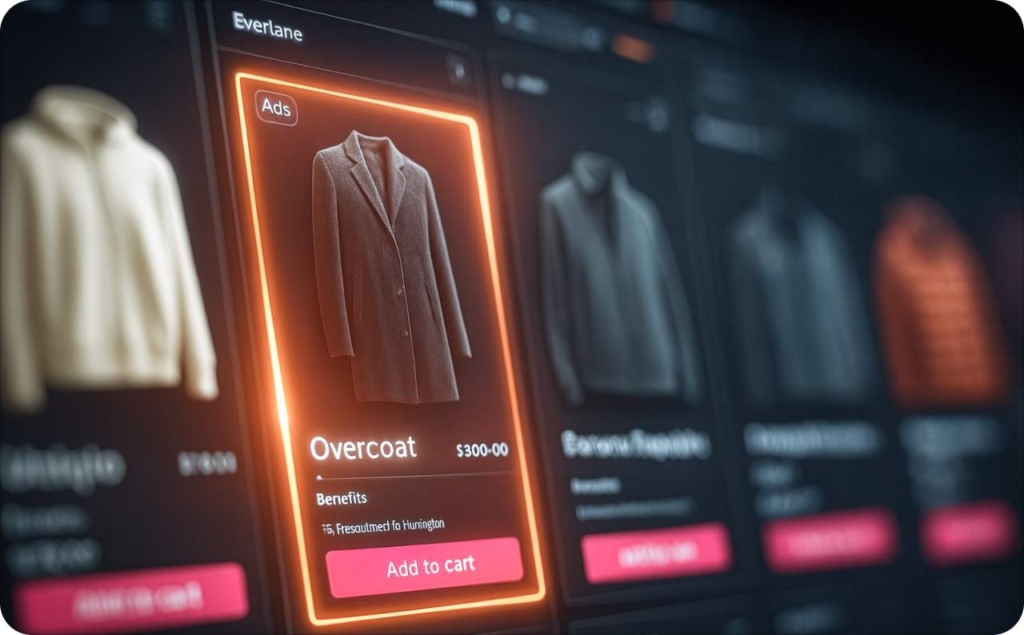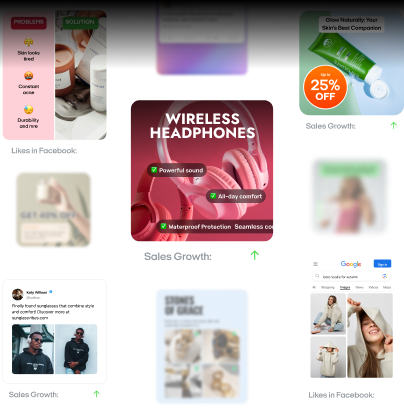Create high-converting ads in minutes: Your 7-step guide to AI ad generators
What if you could launch high-performing ads in the time it takes to grab a coffee? Follow this 7-step guide to mastering AI ad generators.
Ever spent hours crafting Facebook or Google ads, only to watch conversions fizzle? A Gartner survey revealed that 63% of marketers struggle with delivering personalized experiences to customers, which is crucial for improving ad effectiveness.
Instead of risking limited budgets on inefficient ad creation, marketers in small businesses are turning to digital tools that maximize personalization and efficiency without unnecessary spending.
That’s where AI ad generators come in. They use machine learning and NLP to automate your entire ad creation process, from headlines to visuals.
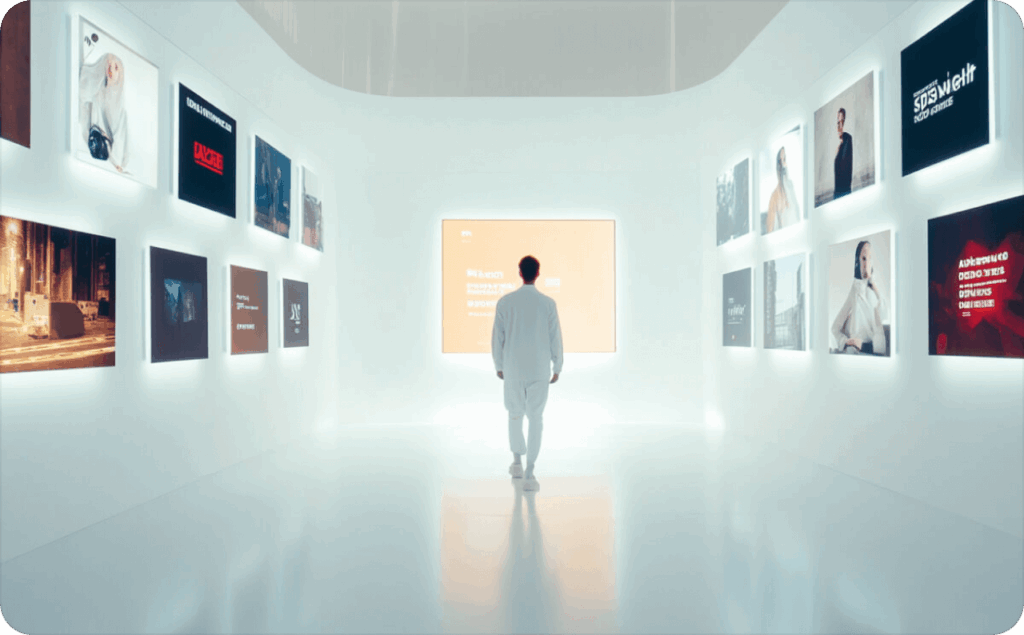
How AI ad generators are transforming digital advertising
Imagine testing multiple ad versions in seconds, then choosing a top performer that delivers 15% more clicks — all without assumptions or coding.
If you’ve been craving a faster, data-backed approach to building high-converting ads, you’re in the right place. Even if you’re on a tight budget or have limited tech know-how, these tools can help you connect with people across Google Ads, Facebook Ads, Instagram, and more. Plus, most AI solutions let you fine-tune your brand voice.
Here’s what we’ll cover:
- What AI ad generators are and why they’re transforming digital advertising
- What the benefits of using AI ad generators are
- How they streamline campaign setup on Google Ads, Facebook Ads, and beyond
- The key metrics that matter most
- The ethical considerations to keep your ads transparent and on-brand
- Real-world case studies showing AI-driven ads in action
Wondering if AI might churn out off-brand copy or inflate your costs? Don’t worry. We’ll tackle common challenges head-on, sharing tips on onboarding your team and staying in control of your message.
Benefits of using AI ad generators
Ever wondered how and why generative AI is transforming advertising? AI ad generators streamline creative workflows, lower production costs, and deliver personalized messaging — helping marketers turn insights into impactful campaigns.
By automating repetitive tasks and analyzing large datasets, AI refines targeting strategies and optimizes content, freeing teams to focus on strategy and creativity. It’s why nearly 70% of marketers already rely on AI-driven tools — and adoption continues to grow.
Below, we’ll unpack exactly how AI ad generators boost efficiency and ROI, and why they’re quickly becoming essential in digital marketing operations.
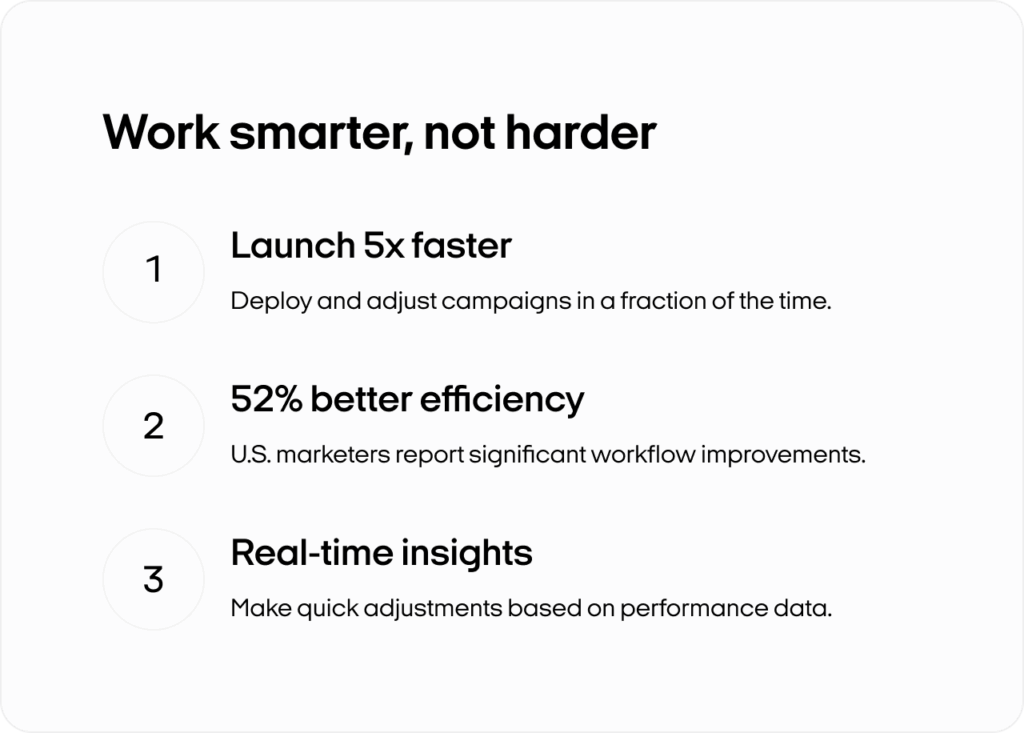
More efficiency, less manual work
A recent survey found that 52% of U.S. marketers using AI tools saw better speed or workflow efficiency. AI ad generators can automate ad creation in just 5 steps and launch campaigns up to 5 times faster than old-school methods, which allows you to deploy and adjust ads more quickly.
They streamline the process by automating data analysis and content creation. AI tools give you live data on how your ads perform. That means you can make quick changes to boost results.
For example, generative AI scans large data sets to find patterns in ad duration, frequency, impressions, and engagement. You then get instant audience insights, so you can tweak your campaigns on the spot.
Higher conversion rates
AI ad generators use real-time data and machine learning for ads to spot the best words, images, and placement so your ads speak directly to the people who matter most. This approach can boost conversion rates by 30% and drive click-through rates up to 14 times higher than old-school methods.
AI ad generators quickly figure out which ideas work best. They help choose which headline, image, or call-to-action drives the most clicks, so you could drop the ones that don’t. That way, you don’t waste money on ads nobody cares about.
AI ad generators help you meet these rules by creating content that’s honest, helpful, and interesting to read. If you need more clicks, more sales, or both, AI ad generators give you a clear path to higher conversions.
Cost savings that scale
Running a small business or working on a lean marketing team? Then you know how fast your ad budget can disappear. That’s where AI ad generators shine. They use machine learning and predictive analytics to cut production costs by up to 90%, so you’re not sinking money into endless revisions.
These tools also create creative assets up to 30 times faster, which means you can launch new campaigns — or pivot when trends change — without hiring extra copywriters or designers.
Testing multiple ad variations at once used to be slow and pricey, but now it’s practically instant. You’ll see real-time insights on what resonates most, helping you invest your resources where they’ll have the biggest impact.
Personalized messaging
Looking to forge a stronger bond with your audience? The key is relevance. Hyper-personalized ads speak directly to each viewer’s interests, boosting engagement and conversions. In fact, according to Forbes, 81% of consumers are more likely to buy from brands that tailor their offers.
AI-powered personalization relies on machine learning and predictive analytics to track browsing histories and purchase records. It then serves relevant offers at just the right moment. A pet supply store, for example, might target dog owners who’ve recently browsed chew toys with dog food promotions.
Integration often takes minimal effort. You can blend predictive analytics into most ad platforms with little coding. Just be sure to follow data privacy guidelines like GDPR, so customers remain comfortable with how their info is used.
Flexible strategies for changing creatives
Feel like your ad performance stalls when you’re tight on time and money? AI ad generator platforms like Zeely AI fix that by tracking CTR, conversions, and engagement to find out which creative elements really connect.
They let you swap out poor visuals or copy right away, so you’re not wasting money on ads that fall flat. So, testing various creative ad formats and real-time insights make it easy to run mini A/B tests each week and boost what works fast.
According to McKinsey, using data-based optimizations can lift campaign performance by 25%. That could mean more store visits, more online purchases, or more eyes on your products.
That’s exactly what small businesses need to grow. Focus your budget where it matters, and you’ll see better returns.
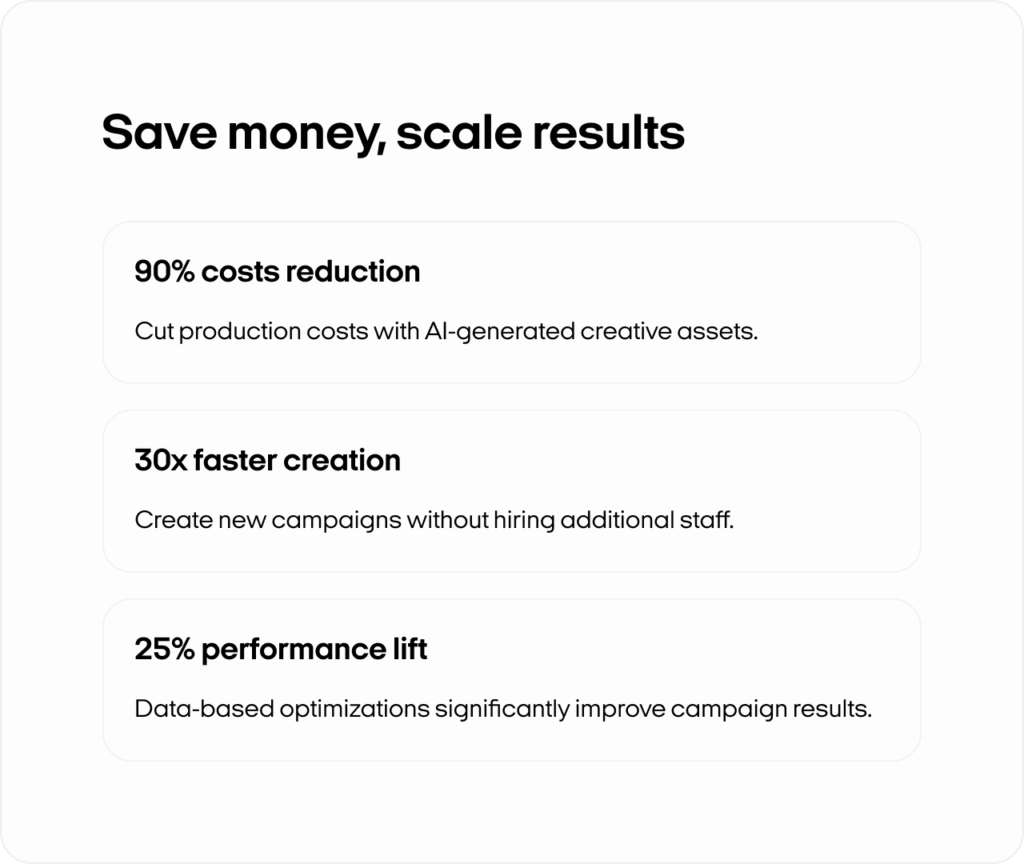
How to use AI ad generators like Zeely AI: A step-by-step guide
Want better-performing AI commercial ads without the creative headaches? AI ad generators streamline the ad-building process, helping you craft engaging, results-driven campaigns in minutes. This guide uses Zeely as an example to illustrate how simple it is to transform your ideas into ready-to-launch ads.
Let’s get started.
Step 1: Add your product link
Paste your product or service URL into Zeely, or manually add images, descriptions, and prices if you don’t have a website. Depending on the category of your business, you can also choose a suitable CTA. This ensures the platform has all the info it needs to generate effective ads.
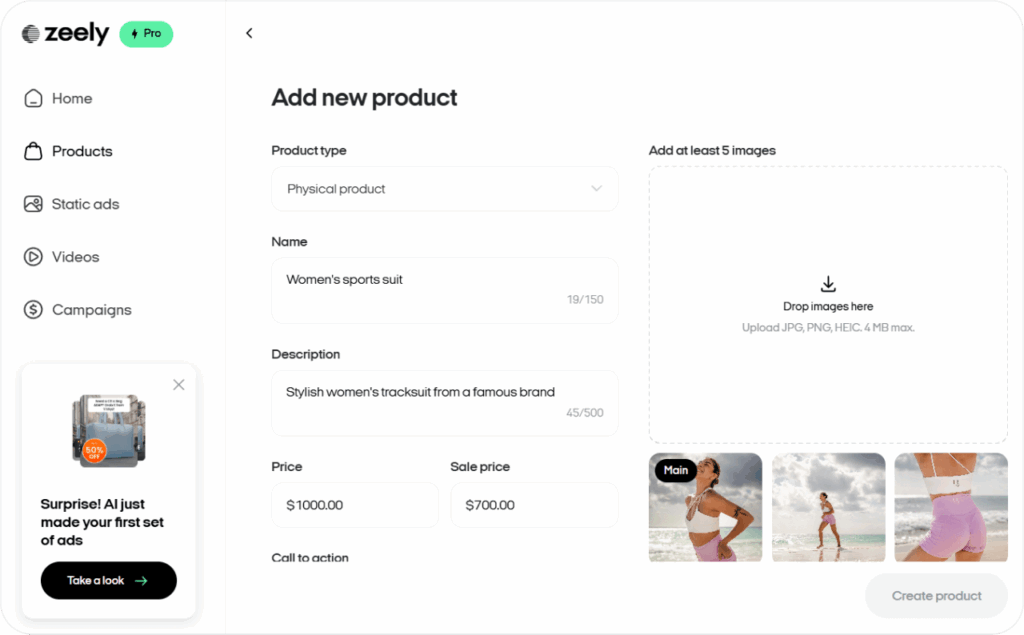
Step 2: Create a video ad
It’s really easy to create a viral video ad. Pick a template that grabs attention, and choose among 30+ hyper-realistic AI avatars that your audience might like. Let Zeely AI produce a script using proven marketing tactics, like AIDA, 4U, etc. Then add music and finalize your video ad — all takes up to 5 minutes, even with manual editing if you want to improve something.
Step 3: Build a static ad
Select the product you want to highlight and browse 100+ tested templates. Zeely AI will automatically choose the best visuals, craft compelling copy, and deliver a polished static ad fast.
You can adjust images by cropping, resizing, or enhancing them. Let the AI refine your text and then save your final ad.
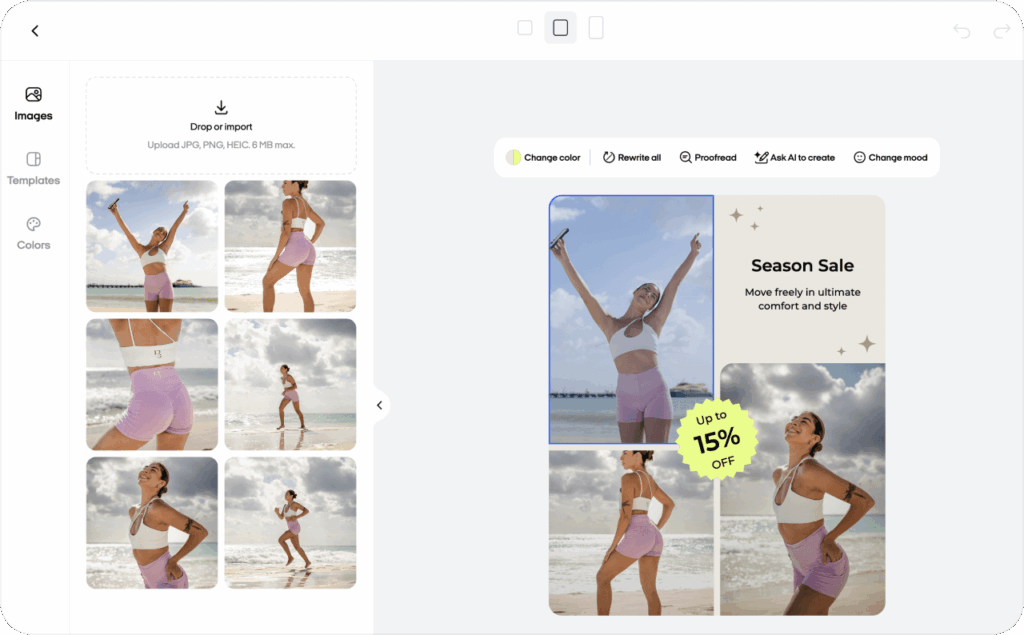
Step 4: Launch your ads
Choose your campaign objective, like Traffic or Leads, and pick a platform, such as Facebook or Instagram. Add both video ads and static ads for A/B testing, then let Zeely AI generate ad copy and a strong CTA.
Decide on your audience location, age, and gender, and set your budget and duration for at least 4 days. Pay for an advertising campaign on the platform of your choice, then launch it. Thanks to Zeely’s official partnership with Meta, the approval usually takes from 1 to 6 hours. To make the most of your campaigns, especially on Meta platforms, don’t miss these top tips on mastering AI marketing campaigns.
Step 5: Analyze and optimize
Check real-time performance to see which ads get the most clicks. When the campaign ends, note your top ads and reuse them. Don’t completely change your best-performing ad — optimize it step by step.
Start by keeping the original Ad 1 as a benchmark. Then, create slight variations of Ad 2, Ad 3, changing just one element at a time. It can be either the text or the image, but not both. This helps you see what exactly improves performance. If you want to test a completely new approach, add a fourth ad with a different template. Keep experimenting to discover what boosts conversions and fuels your growth.
Measuring success: Analytics and optimization
Are you and your marketing team tracking the right metrics to confirm that your AI-generated ads are delivering real results? Use smart ad creative automation to avoid costly mistakes in campaign optimization. From boosting your CTR to controlling your CPC, you can measure and optimize each campaign for maximum impact — without drowning in data.
Key metrics: CTR & CPC
A Click-Through Rate around 3.17% on Google search ads typically indicates that your copy and visuals resonate with your target audience. If you, as the campaign manager, notice your CTR dipping below this threshold, refresh your headlines or images to re-engage potential customers.
Meanwhile, Cost Per Click reveals how cost-effective your ads are. If you observe a CPC climbing above $2.69 without generating more conversions, adjust your targeting or placements. However, a slightly higher CPC may still pay off if it ultimately lowers your total cost per sale.
Cause & effect: Improving your CTR can bring more prospects into your funnel, but be sure to link every gain in clicks back to actual conversions or revenue.
Budgeting for better results
To optimize your ad budget effectively, you should allocate about 10-20% of your daily budget to testing new ideas — like revised headlines or alternative audiences. Whenever an ad outperforms your baseline, gradually increase its budget, which can be around 10-15% per week, so that the AI ad platform’s optimization engine can adapt without destabilizing your results.
Real-world impact: If you dramatically boost ad spend, for example, by 50% in one go, you risk confusing the optimization engine, which might lead to a sudden drop in CTR or conversions.
AI analytics dashboards for checking data
Your AI analytics dashboards translate raw data into actionable insights. Aim to review your performance at least once a week, and collect about 100 clicks per ad variant before deciding whether to pause, pivot, or invest further. If you detect a 20% plunge in CTR or a sharp spike in CPC, investigate right away. You might find that your audience is experiencing ad fatigue or that your targeting requires refinement.
Cross-check: Compare your AI analytics data with native platform dashboards with Google Ads or Facebook Ads, for a 360-degree view of campaign health.
A/B testing for optimization
Approach A/B testing as a series of focused experiments that reveal what genuinely resonates with your audience. Change only one element at a time. You can tweak a headline, image, or call-to-action button to know exactly which variable influences your results. For example, switching from “20% Off Today” to “Money-Back Guarantee” might boost conversions by 17%. If the new version wins, keep it and move on to the next test.
Why this matters: Each improvement, even if it’s just a 5% bump in conversions, adds up over time and can significantly lower your customer acquisition cost.
Audience segmentation for targeted results
You can use AI-powered and advanced audience segmentation strategies to focus on specific user groups at different stages of the buying journey. Facebook Lookalike Audiences help you reach people who share traits with your best customers. If you see that certain visitors browsed your site but didn’t convert, offer them a relevant discount to reignite their interest. Make sure each segment is large enough — at least a few hundred clients — to generate statistically meaningful data.
Refine and adapt: If a segment underperforms consistently, test new messaging or switch platforms to see if you can better engage that particular group.
Knowing when to pause or pivot
Not every ad will become a bestseller. If your CPC rises by more than 30% without a corresponding lift in conversions, take it as a sign to revise your targeting, messaging, or creative. A CTR below 1% often indicates that either your visuals are outdated or your audience mismatch is too large. Before discarding an underperforming ad, test one change at a time — like a bolder headline or new imagery. If you still don’t see improvements, pausing the ad preserves your budget for better-performing initiatives.
Cause and effect: By pausing weak ads and preventing wasted budget, you free up resources to scale campaigns that actually convert.
Optimizing for growth
Your metrics only matter if they guide you to tangible wins. If your Return on Ad Spend underperforms, revisit old successes for clues, try new channels, like social or search, or refine your targeting to better align with your audience’s interests. Even modest gains in CTR or conversion rates, when repeated and scaled, can translate into significant revenue growth.
Long-game strategy: Keep refining your campaigns as you gather more data. Over time, consistent optimizations compound into notable business gains.
Why AI ad generators give you the edge
Your AI ad generation and analytics platform automates much of the trial-and-error process by continuously testing various ad elements, audiences, and bids. This real-time optimization helps you decide which campaigns to scale and which to stop. With precise targeting and rapid experimentation, every campaign you launch has the potential to become your next top performer.
Where to start?
Pick one ad element, such as your headline or CTA, to test immediately. Let your AI analytics dashboards gather enough data, around 100 clicks, to provide a meaningful comparison. Then, apply the insights to your next round of improvements. By consistently iterating, you’ll stretch your marketing budget further, increase engagement, and turn every advertising dollar into measurable business growth.
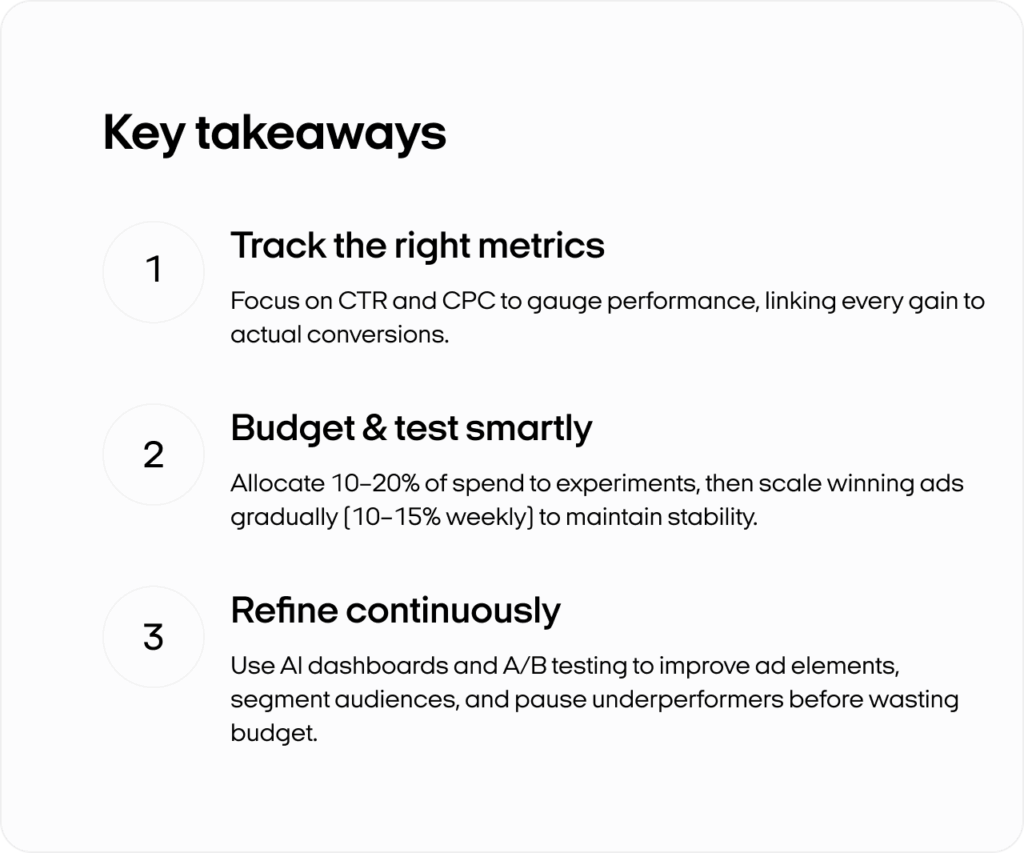
Ethical considerations in AI advertising
Ever worried that AI might unintentionally harm your brand reputation? Over 60% of consumers expect businesses to disclose when AI influences their marketing. AI ethics in digital advertising isn’t just about compliance — it’s about building trust and fairness in your ad targeting.
Why transparency matters in AI advertising
Consumers value honesty about AI-driven marketing. When businesses clearly state that ads are powered by machine learning algorithms or NLP systems, they foster higher engagement. For instance, Stitch Fix openly notes that its styling recommendations rely on customer data and AI. This level of transparency reassures customers and boosts brand loyalty.
According to the IBM Global AI Adoption Index, 83% of customers would switch vendors if they felt their data was mishandled — further underscoring how crucial transparency is for maintaining trust. A straightforward way to practice AI transparency is by including disclaimers on your ads, website, or checkout pages. Simple messages like “This ad is personalized using artificial intelligence” or “Our recommendations are powered by AI technology” align with consumer expectations and regulatory standards.
Protecting customer privacy and consent
Privacy is both an ethical and legal concern. Regulations such as GDPR and CCPA clearly define how consumer data can be collected, processed, and stored. Violations can incur severe penalties, including fines up to 4% of annual revenue under GDPR.
The Cambridge Analytica scandal highlighted the dangers of data misuse. By harvesting data from nearly 90 million Facebook users without explicit consent, the firm used this information to create psychological profiles for targeted political ads, eroding public trust. This case demonstrates how improperly managed AI-driven advertising can spark legal trouble and long-term reputation damage.
To stay GDPR-compliant in AI marketing and maintain consumer trust:
- Explain your data collection and tracking methods in clear language
- Offer simple opt-out options for data usage
- Perform regular privacy audits to align with evolving laws
Preventing AI bias in advertising
AI bias happens when algorithms favor or exclude specific groups because of skewed or incomplete training data. If your ad generator mostly learns from data on young, male consumers, it could unintentionally overlook older individuals or female buyers.
Regularly auditing your generated ads helps catch AI bias in marketing and ensure fairness across customer segments. Examine whether certain demographics see fewer ads or if the language and imagery reinforce stereotypes. Also, monitor ad performance to check for outliers across customer segments. Companies like IBM conduct fairness audits, and smaller businesses can follow suit using tools like Facebook’s Ad Library or Google’s AI Fairness Toolkit to detect and fix biased patterns.
Balancing AI and human oversight
While AI excels at processing large datasets and automating ad creation, human reviewers provide crucial brand alignment and ethical judgment. A good process is to have AI generate initial drafts, then rely on human oversight to refine language, correct potential bias, and ensure the message reflects your brand identity.
If customers voice concerns, such as feeling unfairly targeted, then address them swiftly. For example:
“Thank you for your feedback. We’ve paused this campaign and are reviewing our targeting practices to ensure fairness.”
Acknowledging the issue and outlining your response plan shows accountability and preserves brand trust.
Segmenting small audiences without risk
For small businesses with limited first-party data, precise AI-driven segmentation can feel daunting. Rather than slicing your audience too narrowly from the start, begin with broader targeting and refine based on actual user engagement.
You can launch ads to a wider set of potential customers. Then observe click-through and conversion rates to identify high-value segments. Use Lookalike Audiences on platforms like Facebook to find new users who resemble your best customers.
This approach balances personalization with inclusivity, preventing inaccurate targeting or unintentional bias.
Staying ahead of AI advertising regulations
AI-powered advertising is evolving fast, and so are the laws that govern it. By 2025, stricter cookie policies and a shift toward first-party data will reshape how brands collect and use consumer information. Staying compliant isn’t just about avoiding fines, it’s about building trust.
To stay ahead, keep up with FTC guidelines, ensure AI-generated content is clearly labeled, and double-check licensing for any third-party assets used in your ads. Taking a proactive approach to compliance protects your brand’s credibility and keeps your campaigns running smoothly.
Global initiatives like the EU AI Act and OECD AI Principles emphasize transparency and ethical AI usage. The advertising industry is also moving toward standardized guidelines for responsible AI-generated ads. Keeping an eye on these developments will help your brand adapt to new regulations and maintain consumer trust.
As AI transforms digital marketing, businesses that prioritize compliance and responsible advertising will lead the way. Stay informed, stay transparent, and make AI work for you — ethically and effectively.
Managing mistakes and strengthening trust
Even with ethical AI practices in place, slips can occur. The real test lies in your response. If a campaign is found to exclude a vital audience or contain biased messaging, pause it, revise your AI model or ad settings, and let your customers know you’ve taken steps to fix the issue.
For example, if a clothing ad mistakenly excludes plus-size shoppers, a transparent response could be:
“We’ve identified an oversight in our AI targeting. We appreciate your feedback and have updated our settings to be more inclusive.”
Owning and correcting the error demonstrates transparency and a commitment to ethical AI marketing.
Turning ethics into a competitive advantage
Pursuing ethical AI advertising isn’t just about avoiding legal trouble or negative headlines, it’s about fostering consumer loyalty and brand advocacy. By blending regular audits, human oversight, and clear data usage policies, you can run effective AI campaigns that resonate with customers on a deeper level.
Success stories of using AI ad generators
Do you want to see the real stories behind AI’s power in advertising? These brands, big and small, prove it works, and platforms like Zeely AI make it accessible for everyone.
Nutella’s Unica Campaign was a breakthrough in AI-driven marketing. Using AI, the brand generated 7 million unique jar labels, each featuring a different design. The result? Every jar sold out fast, proving that personalization isn’t just a trend — it’s a sales driver.
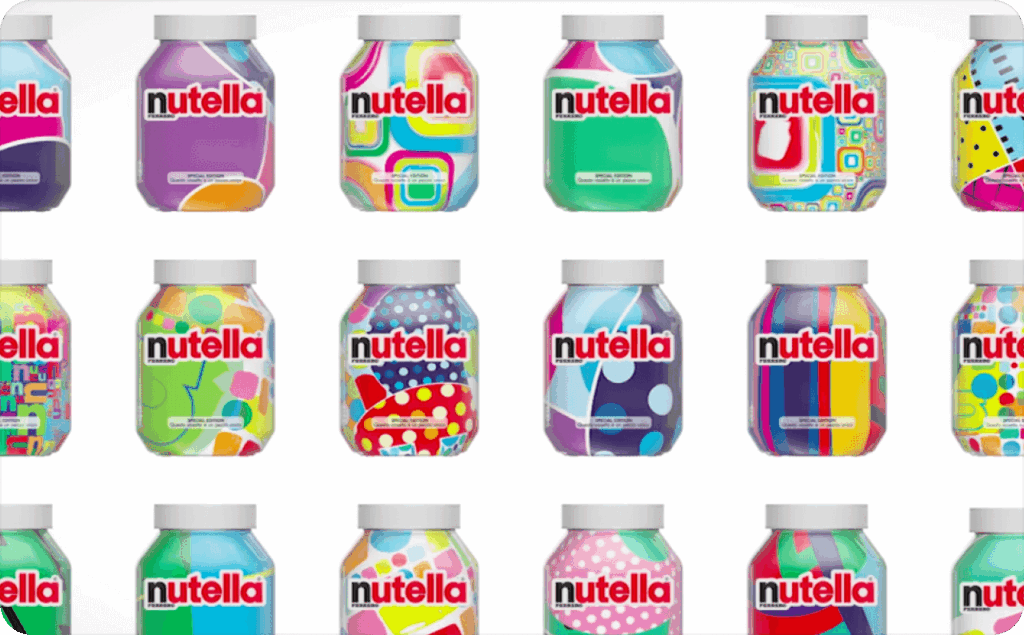
To improve engagement, JPMorgan Chase partnered with Persado, an AI-powered ad optimization platform. AI rewrote the company’s digital ads using predictive analytics and language optimization, resulting in a 450% increase in CTR. This proves that AI-generated content can outperform traditional copywriting methods by tailoring messaging to audience behavior.
Burger King took a bold approach to AI-powered creativity. By feeding past successful campaigns into an AI system, the brand generated quirky and humorous ad copy that resonated with its audience. The campaign went viral, boosting brand awareness and demonstrating AI’s ability to enhance creative advertising.
Zeely AI brings similar perks to smaller ventures, automating design and copy tasks. You can set up campaigns quickly, run tests, and focus on bigger goals.
Small business wins
A local restaurant can use AI to advertise daily specials. The system might show lunch promos to office workers and dinner combos to families.
A boutique fitness studio could leverage data on workout trends. AI learns which headlines boost sign-ups. Then it auto-generates ads matching each target audience’s preferences.
Etsy sellers can break down product categories for hyper-specific ads. One ad highlights handmade jewelry for wedding shoppers, while another focuses on holiday-themed items.
Freelancers might use AI to promote their portfolios. They can run multiple variations of professional ads targeting distinct industries. This helps them grab clients from diverse fields.
Each example proves you don’t need a multi-million-dollar budget. You just need the right AI platform to amplify your message. Zeely AI is built to handle these scenarios with ease.
Summing up
AI is revolutionizing the advertising market, making campaigns more effective and accessible to businesses of all sizes. It’s important to remember that success comes from experimenting with automation, refining strategies with AI insights, and continuously optimizing with real-time data. Companies that integrate AI tools now are gaining a competitive advantage and opening up new opportunities for scale and growth. It’s time to harness the power of AI in advertising to stay ahead of the curve and shape the future of marketing.
Also recommended

